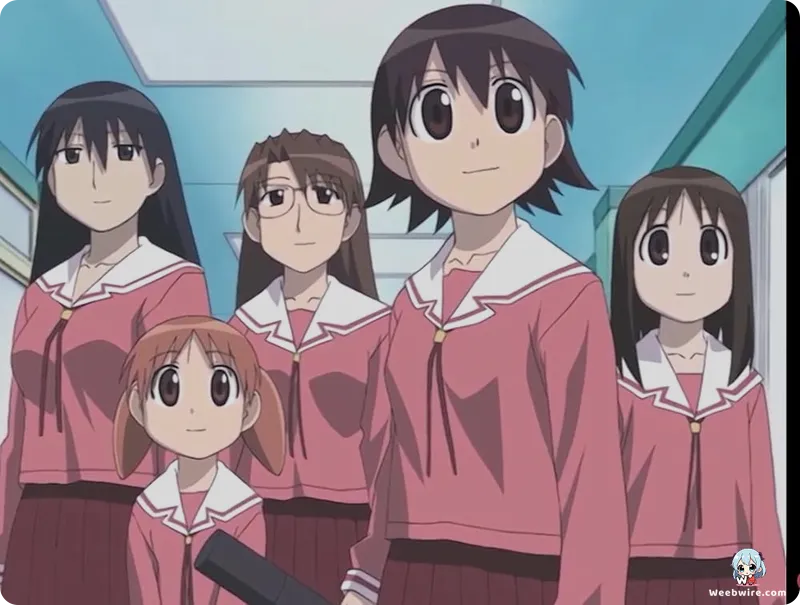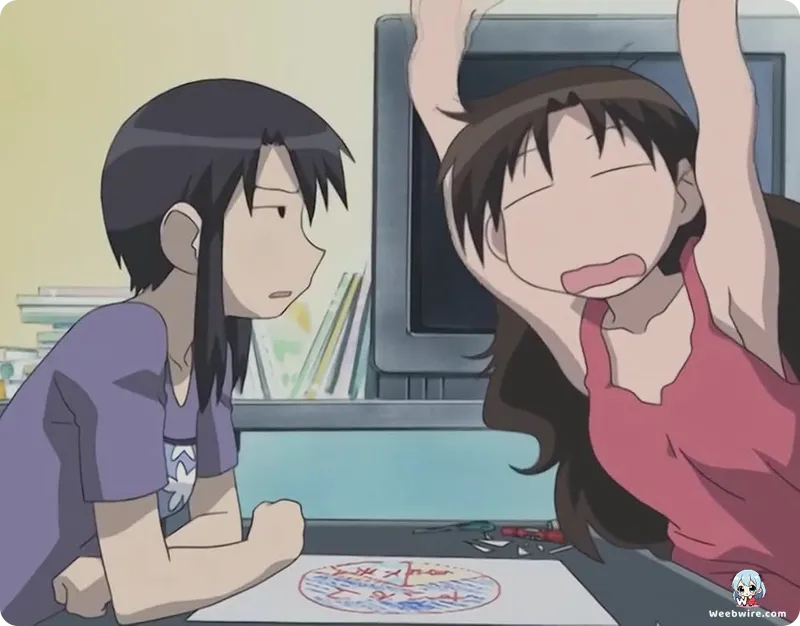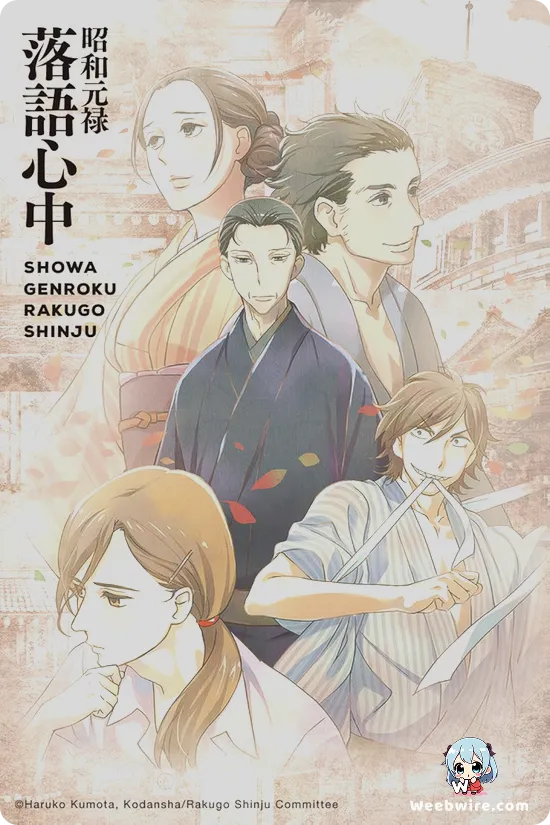Azumanga Daioh: Two Decades of Enduring Laughter and Pioneering Anime Comedy

In the vast and ever-evolving landscape of Japanese animation, a select few titles transcend mere popularity to become true cornerstones of the genre. Among these is Azumanga Daioh, an iconic slice-of-life comedy that first graced screens in 2002. While its uproarious antics and unforgettable cast are well-known to legions of fans, a deeper exploration reveals a wealth of captivating insights and behind-the-scenes details that solidify its pioneering spirit and lasting impact. This retrospective delves into the inherent genius and intriguing trivia of this beloved classic, celebrating its enduring legacy.
The genesis of Azumanga Daioh lies in Kiyohiko Azuma's 4-koma manga, serialized from 1999 to 2002 in MediaWorks' Dengeki Daioh magazine. Its subsequent adaptation by J.C.STAFF proved to be nothing short of revolutionary. While not the inaugural anime derived from a 4-koma, it undeniably established the definitive benchmark for translating the episodic, gag-centric rhythm of four-panel comics into a seamless, engaging animated series. The anime masterfully preserved the manga's distinctive comedic timing and intricate character dynamics, showcasing an adaptive prowess that would inspire countless subsequent slice-of-life comedies. Its resounding success definitively proved that a narrative didn't necessitate an overarching plot to be profoundly engaging and hilariously entertaining; compelling character chemistry and ingenious gags were more than sufficient.
The Unforgettable Cast: Osaka and Chiyo
Among its pantheon of beloved figures, Ayumu Kasuga is universally recognized by her endearing nickname, Osaka. This moniker was bestowed upon her by Sakaki following Ayumu's transfer from the vibrant city of Osaka. What many might not fully appreciate is the meticulous craft behind her personality, playfully embodying certain exaggerated yet utterly charming stereotypes associated with the region. Osaka's frequently spaced-out demeanor, her penchant for delightful non-sequiturs, and her surprisingly profound, often absurd observations form the bedrock of much of the show's humor. Her distinctive character design, notably her signature cowlick, perfectly complements her peculiar charm, instantly cementing her status as a fan favorite and the source of innumerable quotable lines and viral reaction images.

Then there's Chiyo Mihama, the prodigious 10-year-old high school student whose intellect is matched only by her diminutive stature and immense wealth both perpetual wellsprings of comedic material. Chiyo's earnest struggles to integrate with her significantly older classmates, her heartfelt attempts to assert her maturity, and her innocent reactions to the eccentric world around her offer a heartwarming counterpoint to the series' more outlandish humor. A particularly famous recurring gag involves the surreal Chiyo-chan's Dad, a bizarre, cat-like entity with a menacing grin and an utterly nonsensical backstory, appearing exclusively within Osaka's dreams. This abstract, dreamlike sequence epitomizes the series' audacious willingness to embrace the utterly nonsensical for comedic impact, pushing the boundaries of conventional humor and leaving an indelible impression on its audience.
A Unique Comedic Style
Azumanga Daioh is lauded for its singular comedic style, which frequently employs non-sequitur humor, surrealism, and a bold disregard for traditional narrative structures. Episodes rarely adhere to a linear plot; instead, they unfurl as a vibrant collection of vignettes depicting the daily lives and idiosyncratic interactions of the students and their equally bizarre teachers. This deliberate eschewal of a strong overarching storyline was a daring choice at the time, yet it afforded the creative team immense latitude to experiment with diverse comedic scenarios, resulting in some of anime history's most memorable gags. The humor is predominantly character-driven, stemming from the clash of personalities and the unexpected reactions to mundane situations.
Beyond the vibrant student body, the series' adult characters contribute significantly to its comedic brilliance. Yukari Tanizaki, the homeroom teacher, is famously irresponsible, hot-headed, and prone to childish rivalries, especially with her friend and fellow educator, Minamo Kurosawa (affectionately known as Nyamo-sensei). Their competitive dynamic, often manifesting in ludicrous challenges or petty squabbles, injects another layer of absurdity into the school environment. Even the controversial figure of Kimu-sensei, with his unsettling infatuation with high school girls, serves as a dark, albeit memorable, comedic element though one that has drawn criticism over the years. These teachers, with all their imperfections and eccentricities, ground the high school setting in a manner that feels both relatable and utterly fantastical.
Animation and Voice Acting Excellence
J.C.STAFF's animation played an indispensable role in transforming the static panels of the 4-koma into dynamic, fluid comedy. The studio masterfully employed expressive character animation and exaggerated reactions to amplify the gags, ensuring impeccable comedic timing. The voice cast, too, deserves immense commendation, with each actor perfectly embodying their character's distinct quirks. For instance, Tomoko Kaneda's high-pitched portrayal of Chiyo-chan flawlessly captured her youthful innocence, while Rie Tanaka, the voice of Sakaki, often recounted the fun and chaotic recording sessions that mirrored the show's energetic atmosphere. The synergy between the animation, voice acting, and Kiyohiko Azuma's original vision forged a truly unique and immersive comedic experience.
A Lasting Legacy
Even two decades post-initial release, Azumanga Daioh continues to resonate with new generations of anime enthusiasts. Its profound influence is evident in countless subsequent slice-of-life and school comedy anime. It stands as a pioneering work that significantly helped popularize the moe aesthetic in the West and demonstrated the immense narrative potential of the 4-koma format. Its timeless humor, unforgettable characters, and innovative approach to storytelling secure its place as a cherished classic, a testament to the fact that sometimes, the most profound entertainment springs from the simplest, most absurd observations of everyday life. The series remains a beacon of pure, unadulterated fun, proving that a meticulously crafted gag and endearing characters are all that's required to forge an anime that leaves an indelible mark.
Credits
Azumanga Daioh
Author
Kiyohiko Azuma
Cover Art
Kiyohiko Azuma
Studio
J.C.STAFF
Publisher
MediaWorks
Producers





